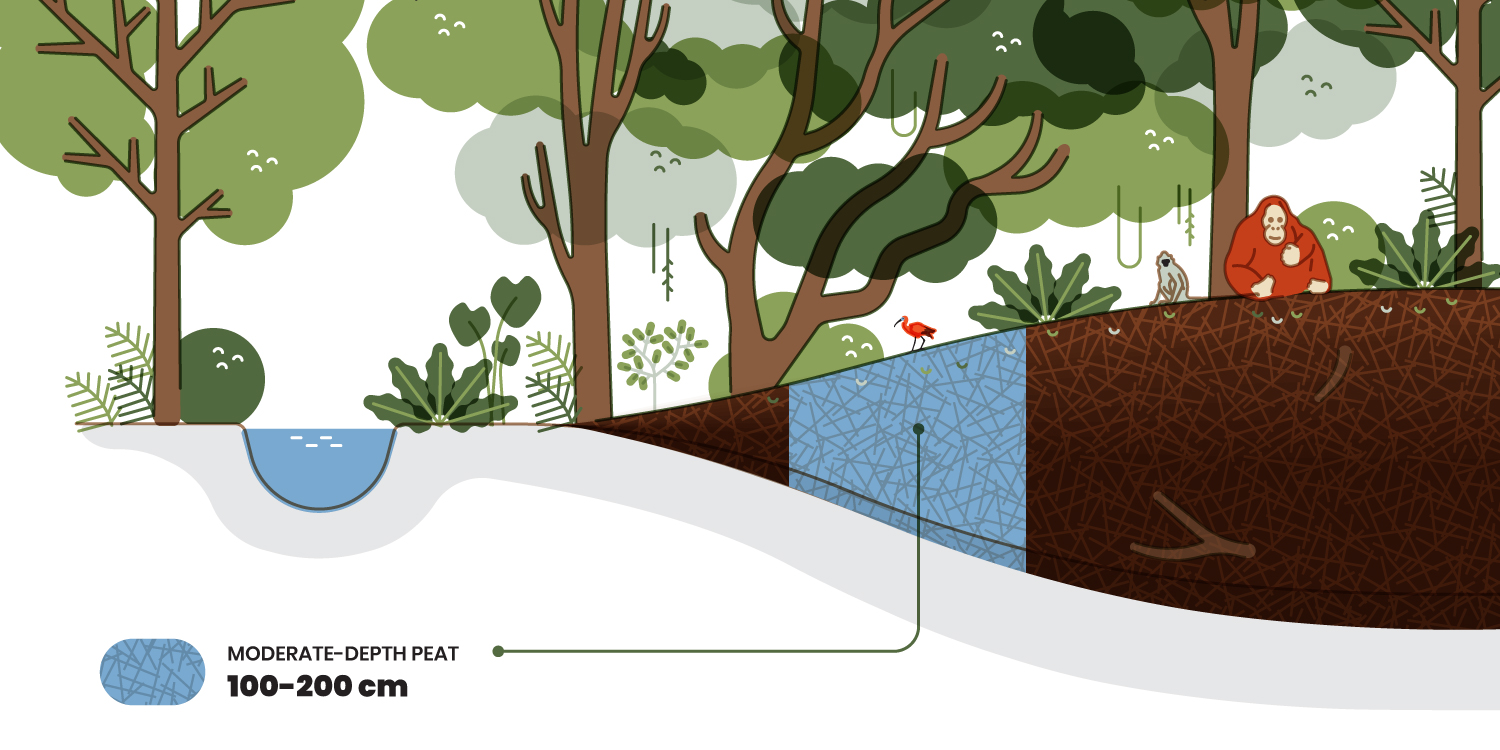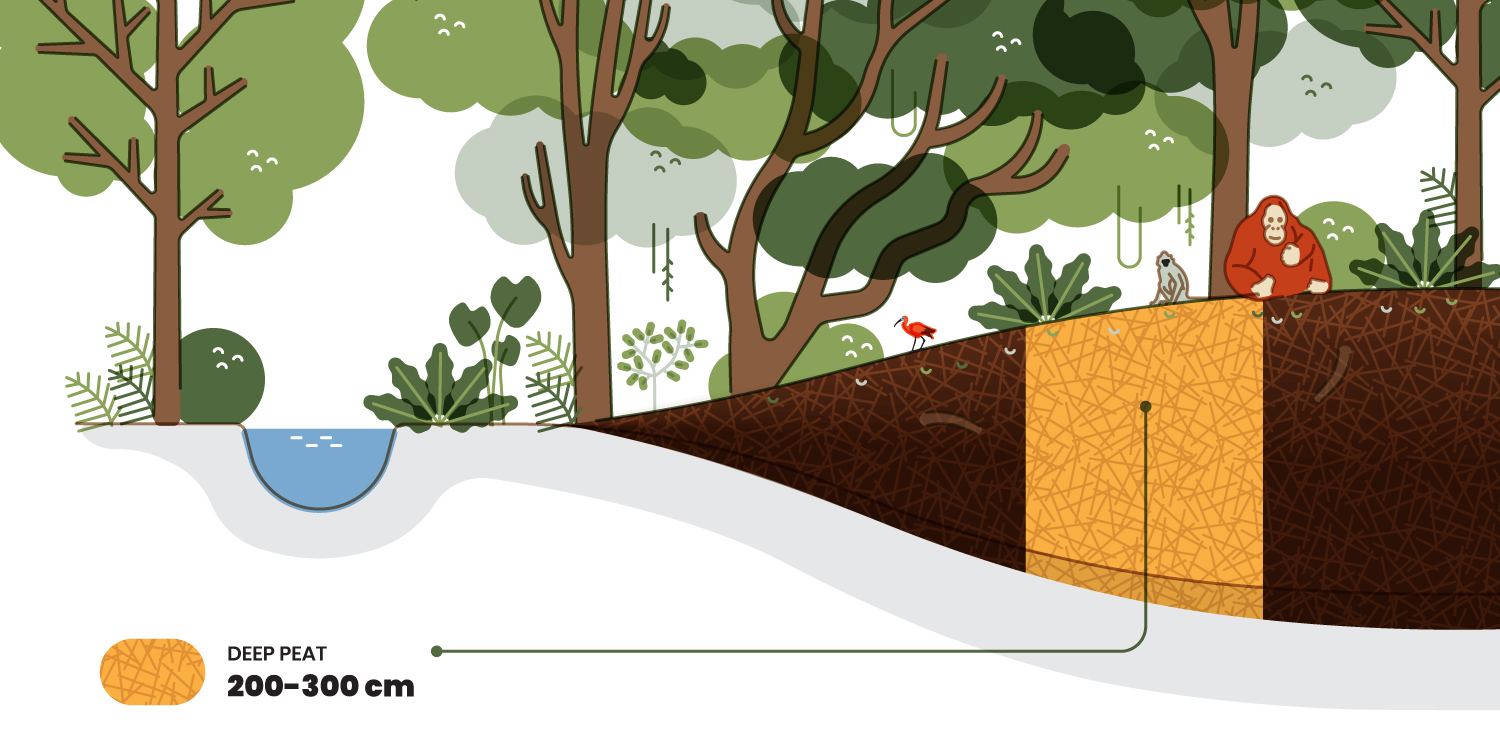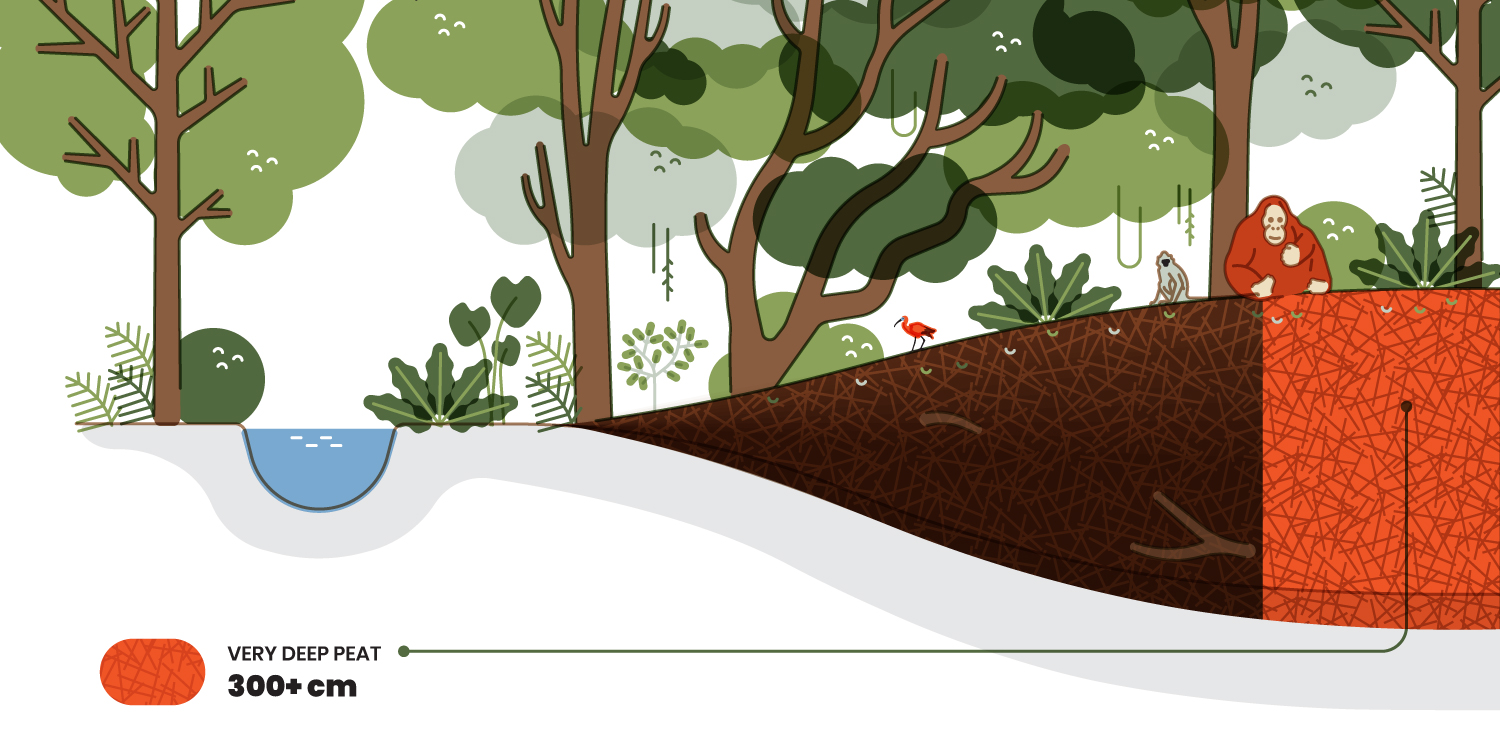Types by depth
The type of peat is determined based on various factors, and depth is one of them. Because peatlands are influenced by geographical conditions and the natural factors of where they are located, the type of peat varies depending on its location.
The following are four types of peat based on their depth:
- Shallow peat, with a thickness of 50 – 100 cm
Shallow peat is formed by organic matter mixed with mineral soil that lies just below the peat layer. Shallow peat tends to have more decomposed organic material and is more fertile. The mineral soil mixture makes the content of nutrients such as Calcium (Ca) and Magnesium (Mg) in shallow peat relatively higher, which makes shallow peat tend to be more fertile. - Medium peat, with a thickness of 100 – 200 cm
The organic matter content in medium peat is higher than that in shallow peat. This is because there is more plant material growing on the surface, which will then die and undergo a weathering process to form a new layer of peat. However, medium peat has less nutrient content because of its relatively higher thickness, reducing the influence of mineral soil and making it less fertile than shallow peat. - Deep peat, with a thickness of 200 – 300 cm
Deep peat is dominated by organic matter, with even less influence from mineral soil. Deep peat also has low levels of Phosphorus (P) and mineral elements, making it infertile. - Very deep peat, with a thickness of >300 cm
This type of peat has the highest organic matter content. On the other hand, very deep peat has very low base, macro nutrients such as Phosphorus (P), Potassium (K), Ca (Calcium), Mg (Magnesium), and micro nutrients such as (Cu (Copper), Zn (Zinc), Mn (Manganese), and Fe (Iron). As a result, the soil is more acidic and infertile. In addition, the thicker the peat, the less decomposed the organic content, and the higher the pore cavities and its ability to retain water.



